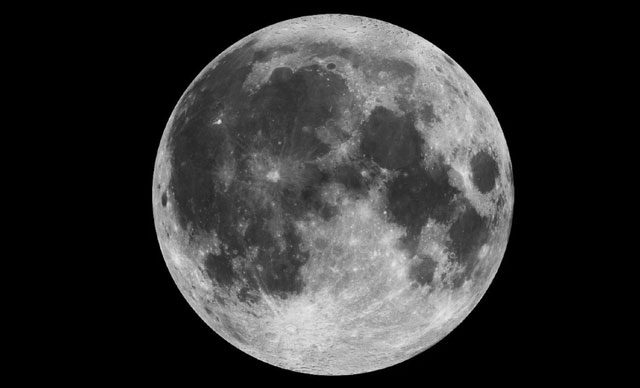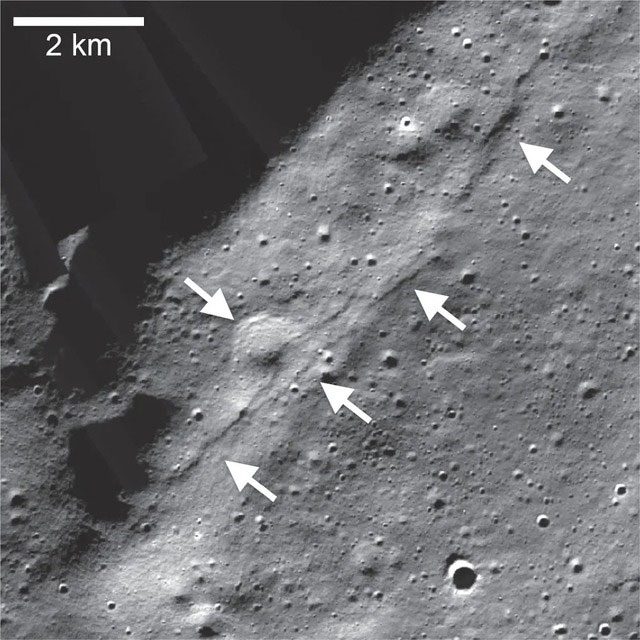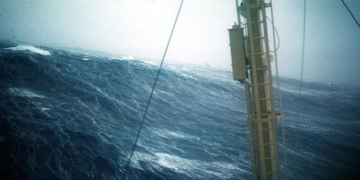A new NASA-funded study reveals that the Moon is not as tranquil as we once thought. This discovery could add uncertainty to missions aimed at establishing a lunar base.
The latest research report indicates that due to the core of Earth’s only natural satellite gradually cooling, the Moon is shrinking and forming “wrinkles,” a term referring to faults that can reach several dozen meters high.
In these fault zones, Moonquakes lasting for hours and landslides could hinder the research efforts of both robotic rovers and astronauts.
“Our simulations show that shallow moonquakes—which can cause strong tremors in the South Pole region—can arise from the slipping of existing faults or from the formation of new faults,” said Tom Watters from the Smithsonian Institution, the lead author of the new study published in the Planetary Science Journal.

The Moon, Earth’s natural satellite.
Specifically, researchers focused on the South Pole of the Moon, a critical area for future missions. They believe that beneath the permanently shadowed regions lies a thick layer of ice, which could serve as a water source for astronauts or be utilized in the operation of a future lunar base.
Indeed, the Moon’s South Pole is the focal point for NASA’s crewed Artemis III mission, scheduled for September 2026. Before embarking on more complex projects, researchers need to have a clear understanding of where they will establish a permanent settlement.
The camera aboard the Lunar Reconnaissance Orbiter has captured changes on the Moon’s surface, revealing thousands of “young, small thrust faults, widely distributed throughout the Moon’s crust“. By comparing this with data from seismic instruments left by astronauts on the Moon’s surface decades ago, the new study has identified a link between newly formed faults and seismic data.

Fault lines on the Moon’s surface – (Image taken from the study).
“The widespread distribution of young faults, their potential activity, and the likelihood of new faults forming […] should be taken into account when planning for the construction of a permanent outpost on the Moon,” Watters stated in a NASA press release.
Watters also told CNN that his aim is to warn future explorers. “The Moon is not a peaceful place where nothing happens,” he stated.





















































